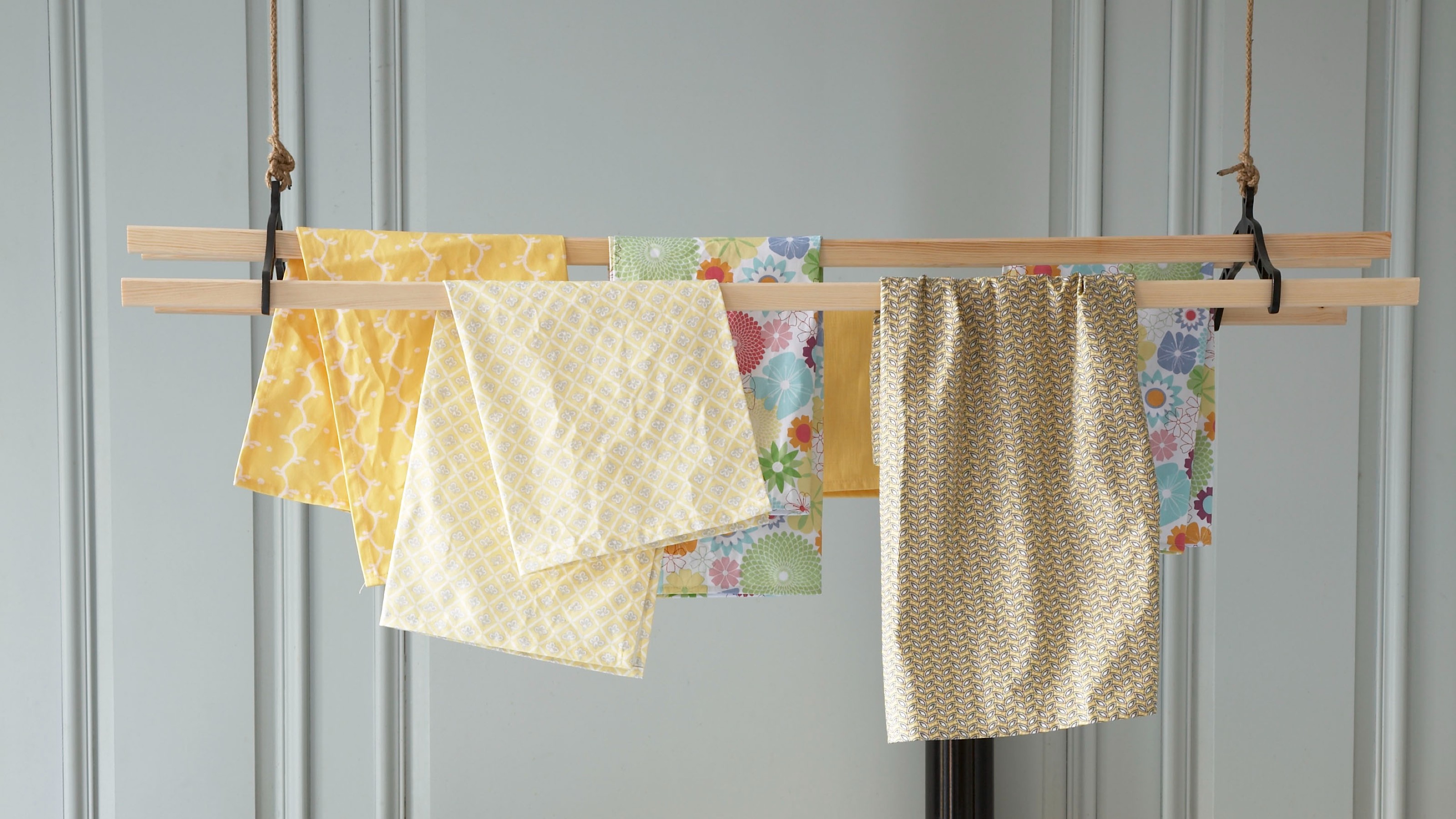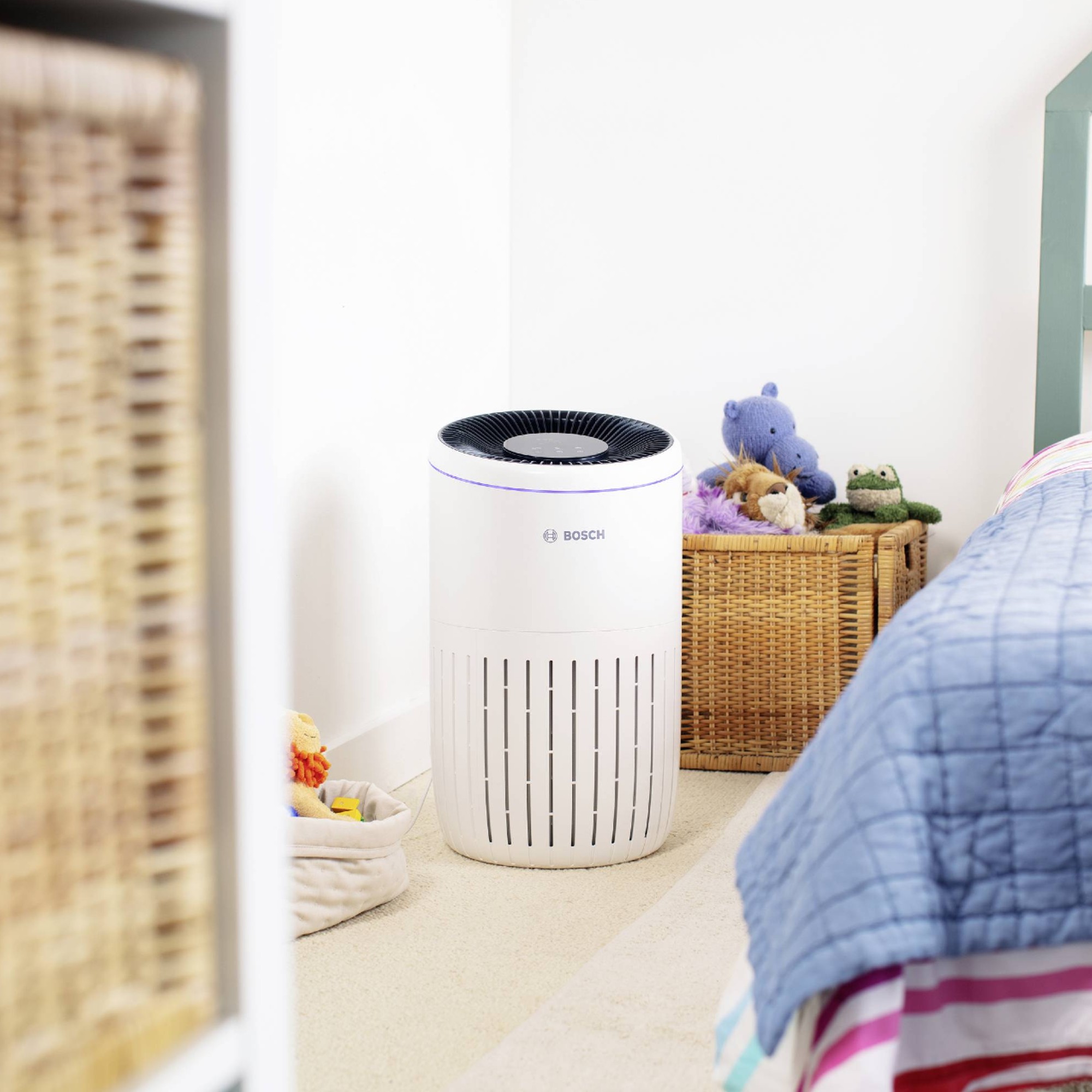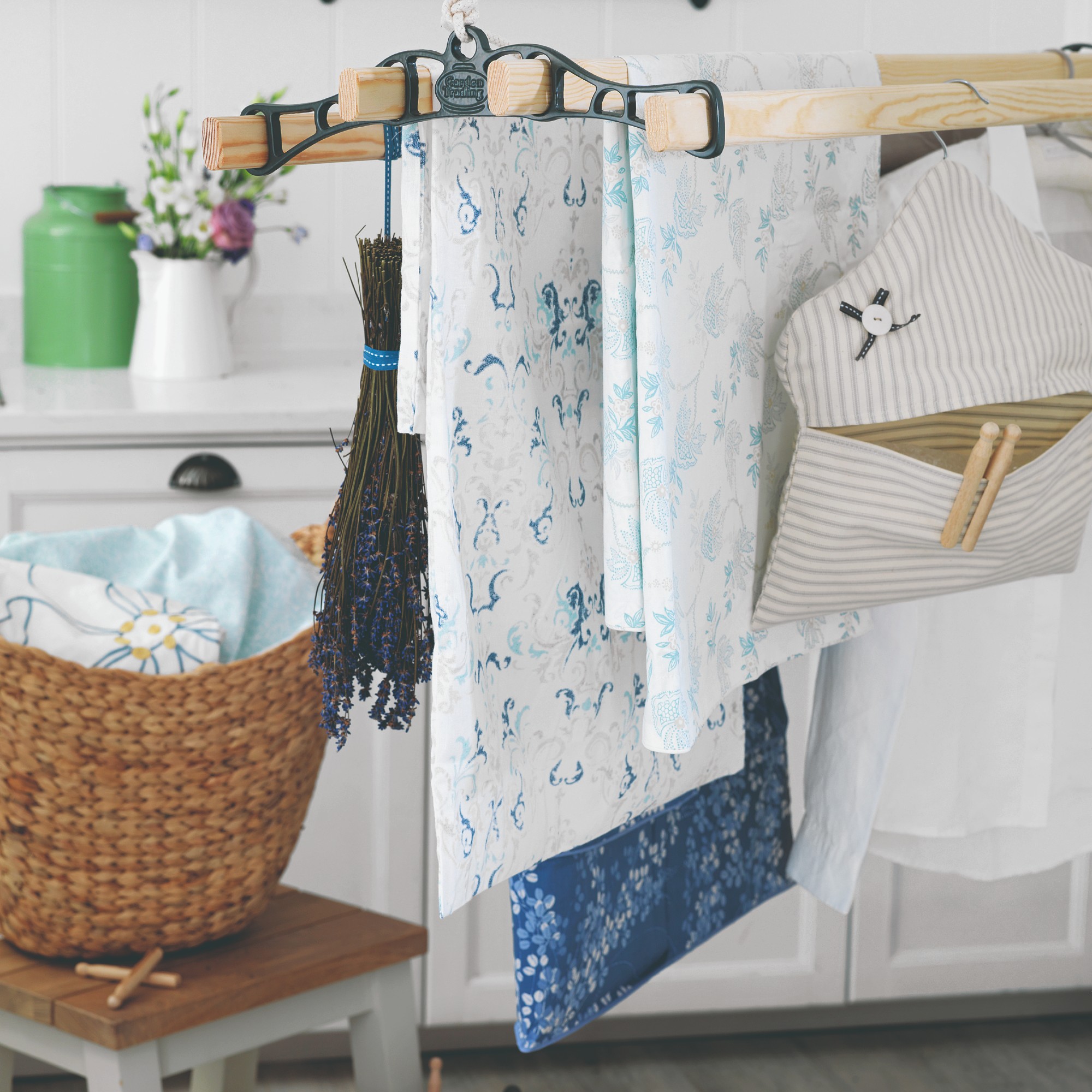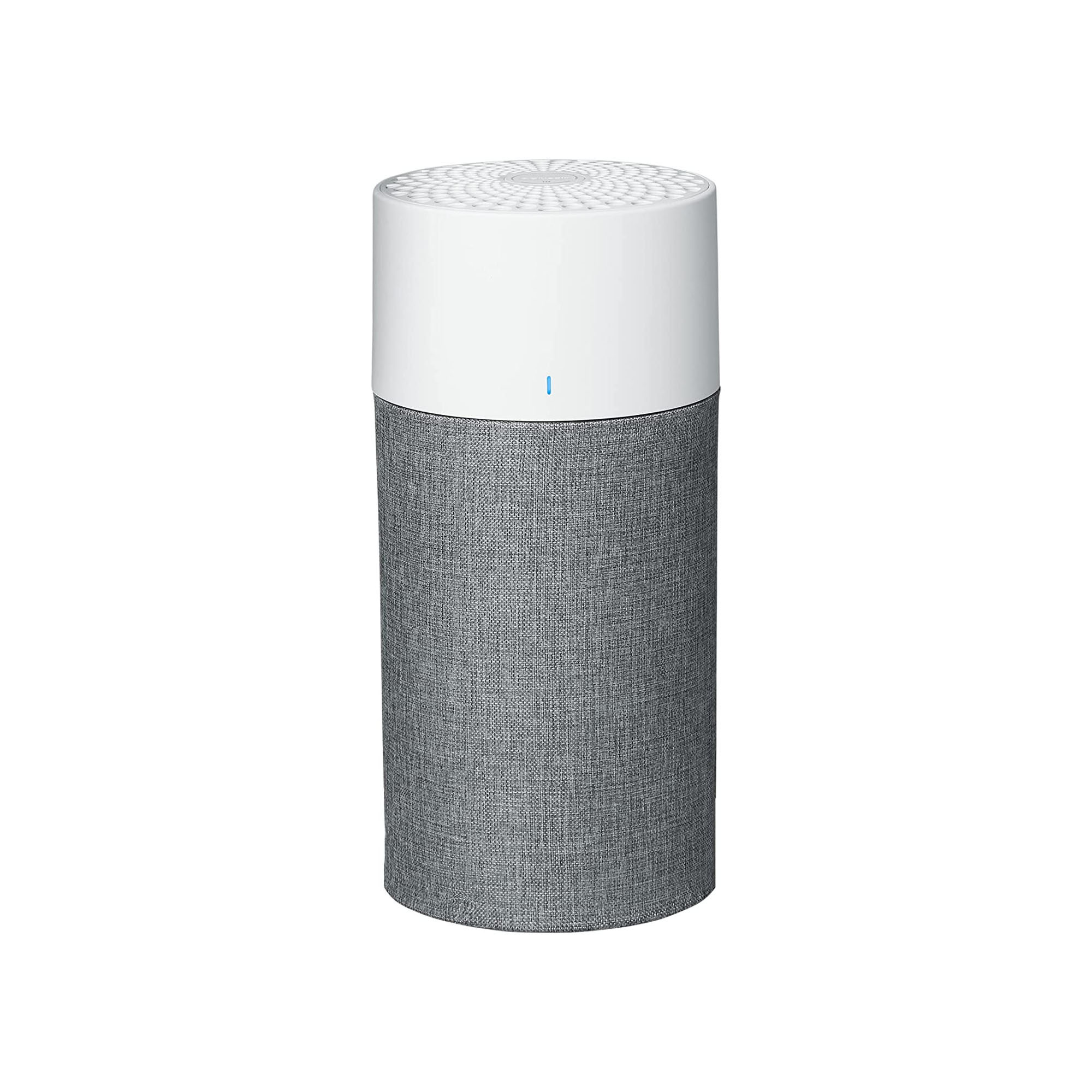Drying your clothes indoors can pose a danger to your home and health – this is how to stay safe
Are you drying your clothes indoors this winter? Then these are the dangers to know about and how to avoid them


During this time of year, drying your washed laundry outside is pretty much unthinkable given the current conditions. So most of us resort to indoor drying instead - and many don’t have any other choice all year round (this writer included). But drying your clothes indoors presents a number of risks and dangers, whether you tend to simply air dry or toss your clothes on a heated clothes airer.
From mould to ill health and wasted energy, all of these and more can come as a result of drying clothes inside. Luckily, there are very few of these that can’t be solved with the best dehumidifier, now an essential home appliance that just keeps proving its worth time and time again.
But there are other solutions and preventative measures you can introduce so that you can safely dry your clothes indoors as approved and recommended by experts.
The dangers of drying clothes indoors
‘Lots of us don’t have access to a tumble dryer to dry clothes quickly in winter and so resorting to drying clothes indoors on radiators, for example, has become quite common practice,’ says Nancy Emery, radiator expert from Only Radiators. ‘Unfortunately, this can cause a number of issues, not only for our home but also for our health.’
These are the 5 risks that can be inflicted upon you and your home as a result of drying clothes indoors – and how to solve them.

1. Mould and mildew
Mould and mildew thrive in high humidity environments. And unfortunately, the moisture from the wet clothes makes the air in your home a lot more humid.
‘One of the reasons why it's not recommended to dry clothes indoors is because it can raise the humidity of the room they're placed in,’ says Polya Petrova, Fantastic Cleaners' cleaning and laundry expert. ‘As the wet clothes dry, moisture is released into the air and creates the ideal conditions for the growth of mould.’
Sign up to our newsletter for style inspiration, real homes, project and garden advice and shopping know-how

Solution
One of the most effective weapons how to get rid of mould on walls is the beloved dehumidifier.
‘If you use a dehumidifier, the air surrounding your wet clothes becomes less humid,’ Polya explains. ‘This allows the moisture within the clothes to evaporate more quickly, resulting in shorter drying times. It's recommended to place the dehumidifier closer to the moisture source for it to work efficiently. In this case, placing a dehumidifier next to wet clothes will help them dry faster by reducing the surrounding moisture.’
And if you are on a budget, you’ll be pleased to know that some of the best dehumidifiers are under £100.

2. Developing cough, flu or chest infection
Mould often has a knock-on effect that doesn’t just affect your home but also your health, resulting in health issues such as developing symptoms of a cough, flu or chest infection.
‘The humidity can condense on cold surfaces and eventually develop into a build-up of mould and mildew and other airborne irritants that the occupants can easily breathe in and introduce into their bodies,’ Polya warns. ‘Besides that, exposure to a humid environment can cause health issues like cough and flu, and development of a lung infection because of the breathing of mould spores.’
Solution
As these issues come as a result of mould, the most important thing to do is to tackle the cause of its growth, which is moisture and humidity. That’s why, similarly to the previous point, investing in a dehumidifier is best, while also ensuring good ventilation and air circulation.
‘You can open windows or use ventilation systems to improve air circulation and prevent moisture buildup,’ says James Auckland, heating expert at Trade Radiators.
Nancy from Only Radiators adds, ‘You don't have to have your windows wide open in the middle of winter to create some ventilation; many windows can be locked in a position where a thin crack can allow some necessary airflow.’

3. Triggering asthma and allergies
Asthma flare-ups and triggering of allergies could also come as a result of mould, as well as other pollutants released into the air through the wet clothes in your home.
‘Drying clothes indoors can release pollutants such as lint, dust, and laundry detergent particles into the air, potentially affecting indoor air quality. This is only really a problem for those with respiratory conditions, or those that are allergic to certain pollutants such as dust,’ James explains.
Solution

‘To improve air quality, it's vital to ensure proper ventilation by opening windows and using extractor fans or air purifiers with HEPA filters,’ James says.
Investing in one of the best air purifiers can be a game changer for someone with asthma and allergies. Our tried-and-true favourite is the Blueair Blue 3210 Air Purifier available at Amazon on a discounted Black Friday deal for £99.
4. High energy consumption and wasted energy
If you’re not just air drying your clothes at home (which is not recommended anyway), then you’re probably using some sort of a heat source, which in turn uses up energy. That can lead to two potential and not very favourable consequences - high energy consumption with high energy bills and/or wasted energy.
‘Drying clothes indoors using heat sources like radiators or heated airers can result in higher energy consumption, leading to an increase in utility bill costs,’ James confirms.
But Nancy adds a lesser known fact, ‘When you're drying clothes on a radiator, you're really just blocking the radiator from heating the room, and while your wet clothing gets a huge amount of heat, your room stays cold.’
‘Your radiator, even without a thermostatic valve, is trying to reach a certain temperature. Yet you're plugging the upstream heat of your whole system with the clothing. Your boiler then has to struggle to heat the room using a radiator that has its convection cycle blocked. Your radiator is effectively rendered inefficient and will end up costing you money.’
Solution
‘If you're using a dehumidifier, ensure it's an energy-efficient model that uses little energy but still takes in a lot of moisture,’ James starts. And for this purpose, the MeacoDry Arete One Dehumidifier has been proven to be the best.
But if you insist on using some form of a radiator rather than a dehumidifier to help you dry your clothes, then Nancy recommends the best towel radiators instead. ‘You could consider a heated towel rail as a way to get smaller items like socks or pants or a single pair of jeans or trousers dry, much the way it helps to warm and dry your towels - but this is really only an option in a well-ventilated space like a bathroom that has a good vent installed or one that is installed near a window.
‘In fact, drying clothes with a heated towel rail is really effective and it's much cheaper to run than a tumble dryer for a start.’

The best dehumidifier we've tested, the MeacoDry Arete One is quiet, easy to use, works superbly and is very energy-efficient compared to other compressor dehumidifiers. Plus, its Smart Laundry Mode is brilliant at drying wet washing. There are Arete One models that can extract 10, 12, 20 and 25 litres of moisture from the air per day and all offer a built-in air purifier that means they improve indoor air quality in more ways than one.
5. Condensation
This time of year, condensation on windows is a common occurrence. But knowing how to stop condensation on walls and ceilings might come in handy if you dry your clothes indoors.
‘When drying clothes indoors, condensation can occur on the likes of windows, walls, and ceilings,’ James warns. ‘This is due to the excess moisture in the air from the clothes reaching the cold surfaces. Over time, this can lead to water damage and potential structural issues, as well as the growth of mould and mildew.’

Solution
Good ventilation is key so regularly opening your windows will help with condensation in your home immensely. Just make sure you don’t let your home get too cold as a result.
‘You should always ensure you have good ventilation in your home, and ensure that you don't let your home get too cold. The colder your home is inside, the more cold surfaces there are and the more chance that condensation will form,’ James says.
‘You should always open windows or use extractor fans while drying clothes, or consider investing in a good dehumidifier to completely get rid of the excess moisture.’
FAQs
Should you leave window open when drying clothes?
Having proper air circulation and ventilation will help a lot with humidity in your home resulting from the wet drying clothes.
‘Proper ventilation is essential in every room where you are drying wet clothes, whichever method you’re using,’ Nancy advises. ‘Drying wet clothes indoors in areas that are not properly ventilated leads to increased amounts of condensation lingering in rooms. The lack of airflow allows this wet air to stick around rather than escaping or being regenerated through vents.’
How do you dry clothes indoors safely?
If you don’t have access to a tumble dryer or simply don’t want to pay a high utility bill for regularly running it, investing in a dehumidifier to help with humidity levels in your home while your clothes dry, releasing moisture into the air is the best way to go.
‘You should consider using a dehumidifier while drying clothes indoors. A dehumidifier helps remove excess moisture from the air, reducing the risk of mould growth,’ James recommends.
So stay safe next time you dry your wet laundry at home.

Sara Hesikova has been a Content Editor at Ideal Home since June 2024, starting at the title as a News Writer in July 2023. She is now also the Ideal Home Certified Expert in Training on Furniture, and so far has tested over 150 different sofas.
Graduating from London College of Fashion with a bachelor’s degree in fashion journalism in 2016, she got her start in niche fashion and lifestyle magazines like Glass and Alvar as a writer and editor before making the leap into interiors, working with the likes of 91 Magazine and copywriting for luxury bed linen brand Yves Delorme among others.
